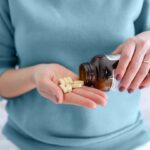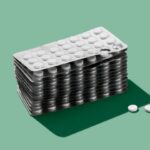Second-degree burns, also called partial-thickness burns, are characterized by blistered skin and deeper damage to your epidermis. They commonly occur from extended exposure to harmful UV rays from the sun.
It’s best to avoid swimming with a second-degree burn. Limiting activities that irritate your skin, including exposure to chlorine or ocean water, can help burns heal more quickly.
Swimming With Healing Burns
Second-degree burns are mild to moderate burns characterized by blistering, and red and swollen skin, according to Cleveland Clinic.
Try to avoid swimming or bathing with a second-degree burn. Exposing any broken skin from a second-degree burn to the chemicals in pool water or to the high salt content of ocean water can cause irritation and possible infection, according to MedlinePlus.
If you have any second-degree burns, don’t swim until they fully heal and no broken skin remains. Instead, opt for showers until your skin mends, especially if your burns are more serious. Healing skin is sensitive, so always test the water temperature before you get in.
Degrees of Burns
Previously described as first-, second-, or third-degree, burns are now described as follows, depending on their severity, according to Cleveland Clinic:
- Superficial (first-degree) burns, or surface burns, are the mildest type of burn. They can occur from prolonged sun exposure or briefly touching a hot surface, like a stove. Superficial burns are typically uncomfortable but not painful, and they heal quickly.
- Partial-thickness (second-degree) burns are more serious than superficial burns. The first layer of skin appears red and swollen, and it typically bubbles or blisters. With treatment, these burns usually heal with little or no scarring within about three weeks.
- Full-thickness (third-degree) burns are the most serious type and affect all the layers of the skin. They typically cause nerve damage and can result in scarring.
Healing and Treating Second-Degree Burns
Healing a second-degree burn takes some care and patience. According to Cleveland Clinic, you can take the following steps to help treat these burns:
- Gently wash the area with cool water right after the skin has been burned.
- Cover the burn with a clean dressing or non-stick gauze, being careful not to pop any blisters.
- Try not to scratch the burn or break blisters. This can raise your risk of infection.
- Avoid ice, which may cause more damage to the area.
A second-degree burn that covers less than 15 percent of your body is usually considered minor. But if your burn is larger than 3 inches in diameter, get medical attention.
Preventing Second-Degree Burns
Second-degree burns commonly occur from extended exposure to the sun, contact with fire or hot objects, certain chemicals, and electric shock, according to Cleveland Clinic.
To prevent sunburns, put on sunscreen before you spend time outdoors.
To prevent other causes of second-degree burns, always use caution and appropriate protection when dealing with fire or other hot elements around you.
Read the full article here



